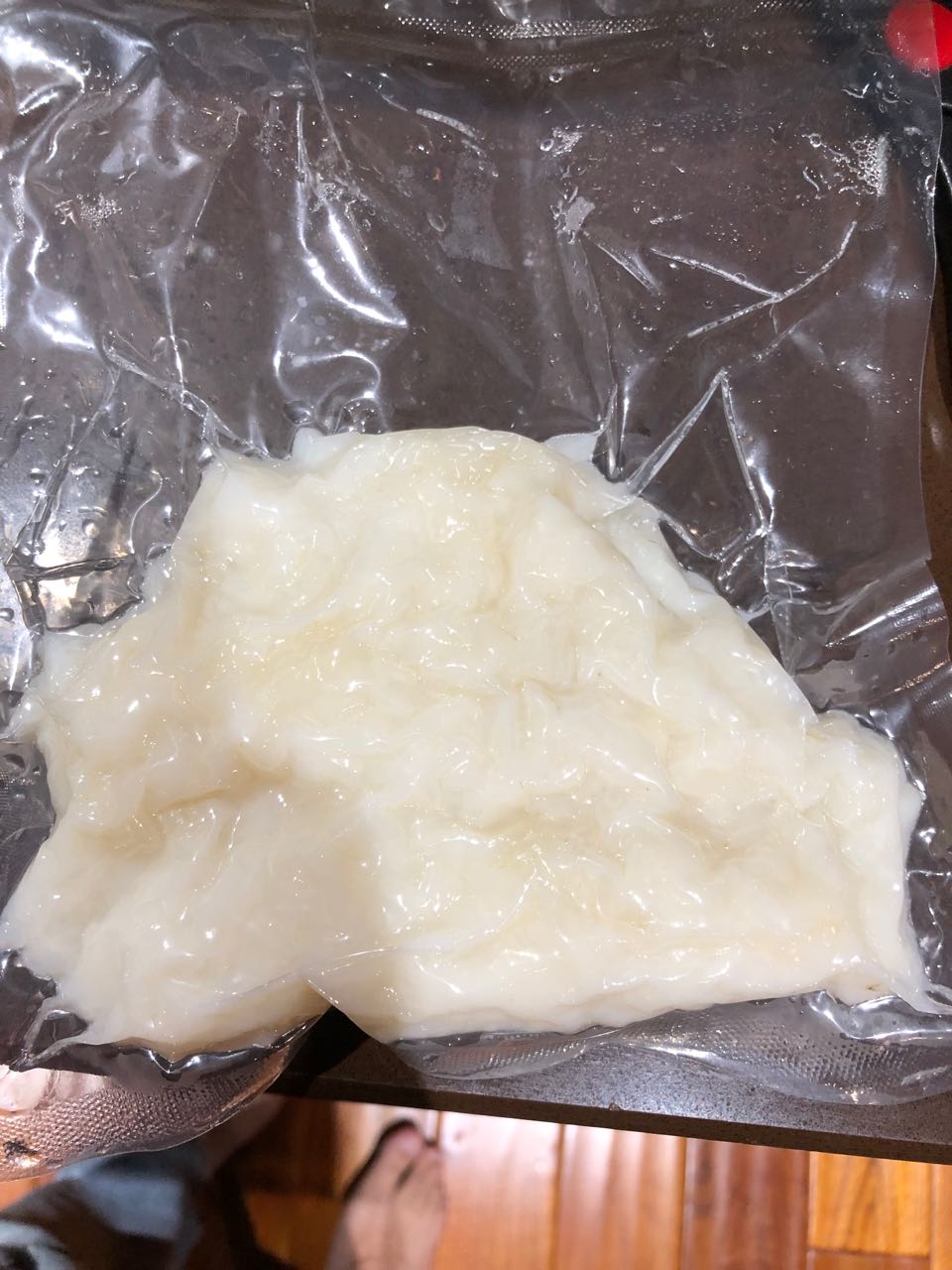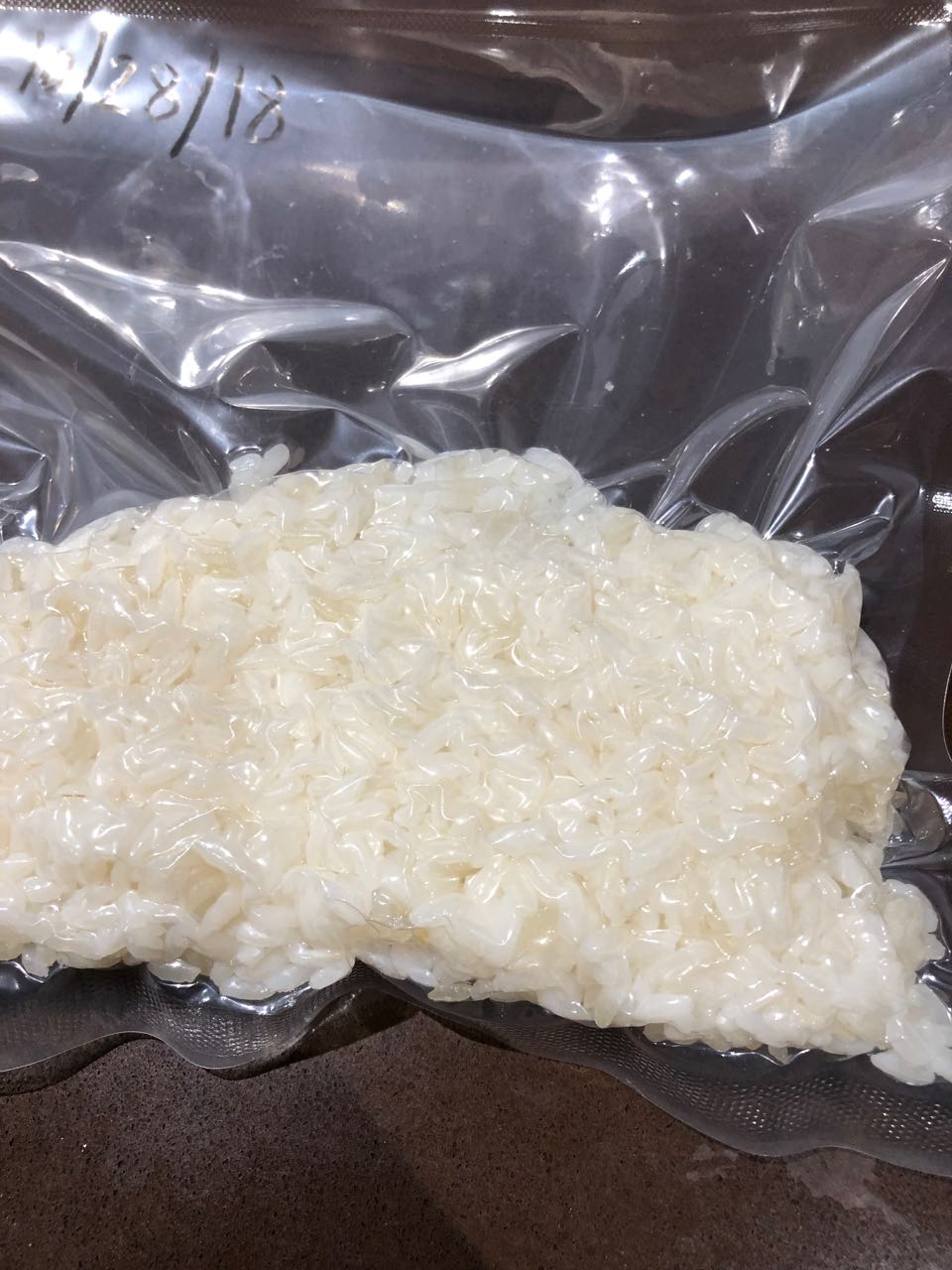POSTS
Long term results of vacuum sealed and frozen foods
As you will see, vacuum sealed and frozen cooked food can hold its texture and flavor over a long period of time. Properly selected ingredients will hold up to the freezing and vacuum sealing process.
This isn’t a proper science experiment since there’s no comparison with other means of freezer storage. Tightly wrapping and preventing air from circulating around the food may very well be good enough.
However, anecdotally, even store bought pre-packaged foods that were sealed in plastic bags such that freezer air shouldn’t circulate, wound up going bad and getting freezer burn over months. They developed ice crystals on the food surfaces even though they had never been opened. There seemed to be air leaks in the plastic packaging itself through holes developed over time in the thin wrapping, or sufficient moist air remaining in the packaging. Thicker plastic bags such as VacMaster 3 mil poly bags maintain their airtight seal better.
All of these sealed frozen foods were reheated to serving temperature using a sous vide hot water bath of 80 degrees Celsius for 20 minutes. I use the Joule for this hot water bath sous vide approach but there are many other choices available both online and in local stores like Anova or even a low priced one from Monoprice.
Sous vide for general home use has become quite a trend recently, and that’s not surprising because it requires little attention or effort to get consistent results. That’s a major thesis of this site - that with proper freezing and reheating of food, you can have a quick and easy meal. It takes about 20 minutes to warm cold water to temperature, another 20 minutes to reheat food, and no watching of the food is required during any of the time. If you leave it in the bath for a few minutes longer, it’s not a disaster. The food is evenly heated throughout without attention – unlike with a microwave where you have to carefully adjust timing and stir a couple of times during reheating to avoid vaporizing some parts of food while leaving others ice cold.
I’ll add detailed recipes for these, but here are the results you can expect.
Simple pasta and homemade mushroom tomato sauce, cooked and sealed August 8, 2018.
- Sampled October 17 (71 days old). The pasta texture is fine. It was al dente when originally packaged and still al dente after reheating. The sauce is still flavorful. Although I’ve made better tasting pasta since, aging hasn’t affected this batch.
- Sampled October 29 (83 days old). It’s still good. I think it tasted even better than the earlier sample. Maybe it was because I reheated it longer by accident?
Vegetarian fried rice, cooked and sealed June 26, 2018
- September 29 (about 90 days old) The texture is still good. The mushrooms, green beans, and eggs still have good texture. I don’t remember detecting zucchini. I think the zucchini may be losing its texture.
- October 27 (124 days old). The zucchini actually has texture too. It’s not so different than initial freezing over 4 months earlier. This keeps very well.
Chili beef and beans packaged September 14
- October 31 (48 days) still good texture and flavor
- November 27 (75 days) still good. Beans are still solid and beef is still flavorful. The bell peppers softened a little bit with the freezing but still have some substance. The onions and tomatoes became soft as happens with freezing.
- December 10 (88 days) still good. I expect this will keep very well.
Pasta beef and mushroom tomato sauce packaged September 30. Some were vacuum sealed while still warm, and some were vacuum sealed after freezing first.
- November 1, 13, 28 (33, 44, 60 days). It’s still good. Whether the batch was frozen first and then sealed, or sealed when merely warm didn’t affect the results.
Chicken soup packaged October 14
- November 9, December 6 (27, 53 days). Carrots, potatoes and celery still have good texture and flavor.
Chicken fried rice (packaged November 13)
- November 24 (12 days) still good, and based on the results of the vegetarian fried rice, I expect this to keep well over a number of months.
Which ingredients don’t hold up well? Of the ingredients used in these and other experiments so far,
- Konnyaku, specifically Shirataki noodles if vacuum sealed while still rubbery. It turns into something stringy like dental floss rather than maintaining its rubbery noodle texture.
- White jasmine rice if vacuum sealed by itself while still soft or not mixed with other ingredients. It turns into a solid block of rice similar to mochi. Instead, if it was frozen first and then vacuum sealed then I’d expect the grains of rice would remain separated after the sealing process. As seen in photos below, the grains remain more separated when the rice is first frozen before sealing.
- Onions and tomatoes. The liquid containing cell walls break down with freezing and you still have flavor but no longer have texture. Use in pasta sauces, soup, chili for flavor is fine, but you should have other freezer tolerant ingredients to provide the texture to the dish.
I believe with a little preparation, some of the above ingredients like rice and konnyaku could still survive the freezing process with texture intact.
As for which ingredients do hold up well without much preparation, more articles to come about this with recipes.


